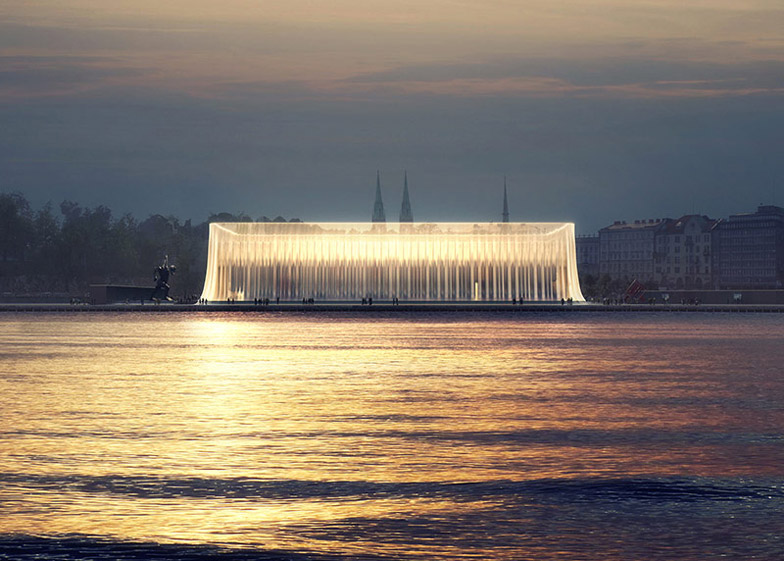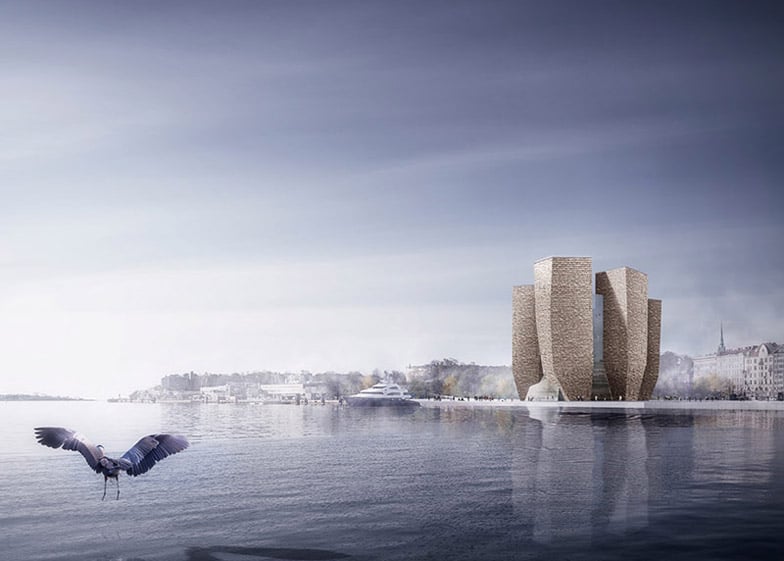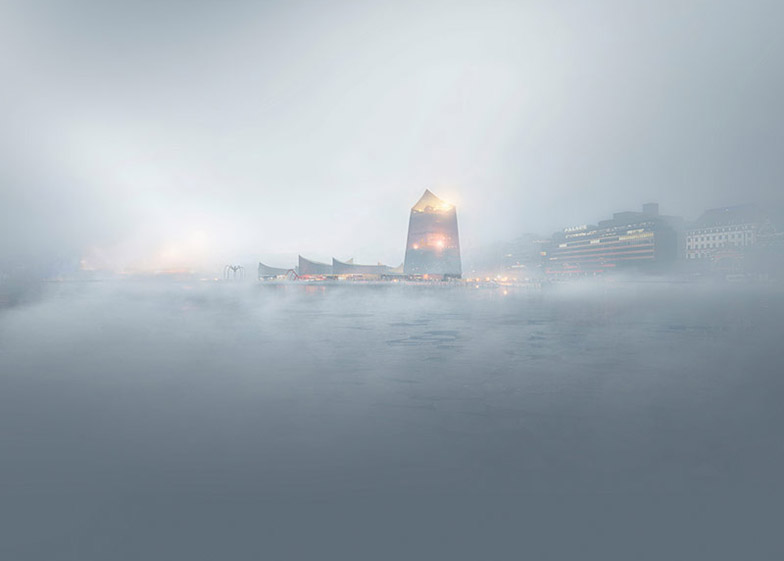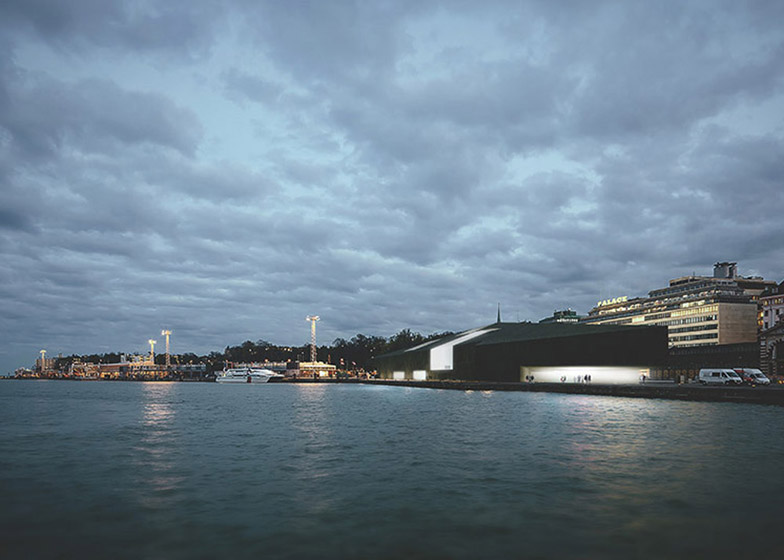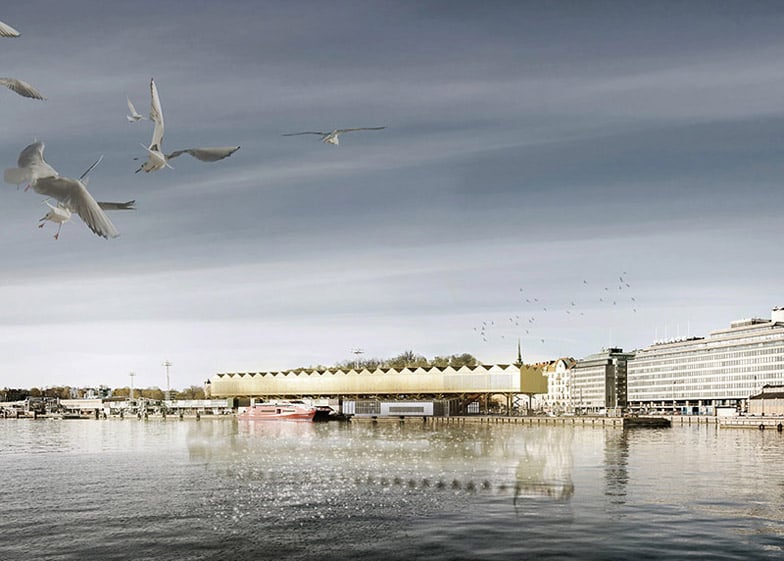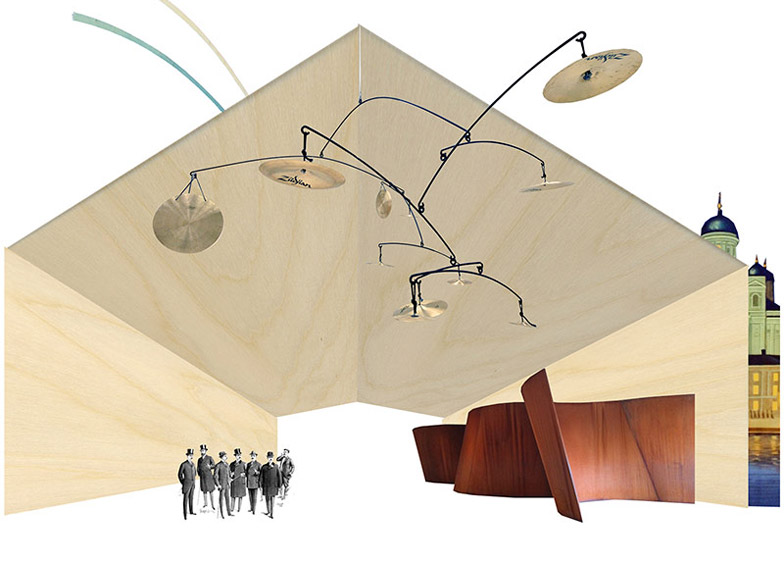News: after commissioning landmark museums by Frank Lloyd Wright and Frank Gehry in the 20th century, the Guggenheim has shortlisted six little-known practices for its latest outpost in Helsinki.
London-based Asif Khan is joined on the shortlist by Zurich firm AGPS Architecture; international company Fake Industries Architectural Agonism; Haas Cook Zemmrich STUDIO2050 from Stuttgart; Parisian firm Moreau Kusunoki Architect; and Australian studio SMAR Architecture.
The competition to design the £83 million Guggenheim Helsinki art museum, which will be built on the waterfront in the Finnish capital, attracted a record-breaking 1,715 entries.
Solomon R Guggenheim Foundation director Richard Armstrong said that trusting the design to less well-known firms rather than major international names was a gamble, but one that was in line with "the spirit" of the organisation.
"Architectural courage and a willingness to engage with the very best practices of the time is really characteristic of the institution," Armstrong told Dezeen.
A winner will be announced in the summer. Although the names of the shortlisted firms have been revealed, the Guggenheim Helsinki competition submissions remain anonymous and are identifiable only by their registration numbers.
Entry GH-04380895 – consisting of a group of pavilions – was praised by the judges for its uniqueness, although its tower, which is shown illuminated at night like a lighthouse, generated "concerns over the placement and size of the galleries".
GH-1128435973 was selected thanks to its "industrial vernacular", with a "particularly interesting" low silhouette that presented a "compelling response to the Guggenheim principles for the new museum even if it was not fully developed yet" according to the jury citation.
GH-121371443, which proposes a rectangular building with a curtain-like facade that allows the building to glow from within at night, was described as "simple but extraordinary". The jury felt the scheme had "such a density of visual impact that it would draw a nickname from the public" but needed further work on its internal layout.
Meanwhile, GH-5059206475 was praised for proposing the use of the same materials as neighbouring buildings. "The architecture is based on an evolving ecology of materials, forms and atmospheres," said the jury. "The scheme was based on an old store house, which was felt to be a subtle concept with a great deal of potential."
A low black building punctured with sections of brightly lit glazing in the centre and around the ground floor entrance, entry GH-5631681770, demonstrated "a good understanding of how the city works and the proposal presented valuable research demonstrating a new direction for the museum internally and in relation to the urban fabric."
Finally, GH-76091181 proposed an "especially elegant" use of timber, with an internal courtyard and a circuit of surrounding galleries. "The use of nine lifts was especially questioned, but it was felt that the gallery ‘rooms’ could work well if the horizontal and vertical circulation scheme could be developed both in terms of efficiency and complexity of visitor experience," said the jury.
An 11-strong jury – including Tokyo architect Yoshiharu Tsukamoto, founder of Atelier Bow-Wow and Chicago-based architect Jeanne Gang – chose the schemes from the first stage design submissions, which were published publicly online.
Due to the number of submissions, competition organiser Malcolm Reading Consultants arranged an advisory panel to sift the designs into categories prior to judging, according to their compliance with the original brief.
Each firm will be given an additional briefing to develop its scheme further and produce physical models by 2015. All the shortlisted designs will be exhibited publicly in Helsinki in spring.
A winner will then be announced in June 2015 and will be awarded €100,000, with each runner-up receiving €55,000. No start date has been announced for the project.
The Guggenheim organisation is behind a series of art institutions that have become famous for their iconic architecture, including the spiralling Frank Lloyd Wright Guggenheim in New York and the Guggenheim Bilbao by Frank Gehry, which has been credited with regenerating the Spanish town by attracting large numbers of tourists. Gehry is also designing the organisation's largest outpost – the Guggenheim Abu Dhabi, which is due to open in 2017.
The City of Helsinki is reported to be in line to pay the foundation a £19 million licensing fee, while the building itself is expected to cost over £83 million.
Some critics have objected to the American cultural brand occupying a key site in the Finnish capital.
Architect and writer Michael Sorkin teamed up with Finnish architects and artists to launch a rival competition called The Next Helsinki, intended to generate other ideas for revitalising the city's South Harbour. This competition is open for entries until 2 March 2015.
The group said the proposals it had received thus far were "eloquent reminders that art and creative expression are more than showy attractions for cruise ship visitors – they can and should be a vital part of urban planning."
"Helsinki deserves much better than a Guggenheim Bilbao knock-off. There is a real opportunity here to make some urban history," said Andrew Ross, New York University urbanist and The Next Helsinki jury member. "This competition is for people who have the future in their bones."

